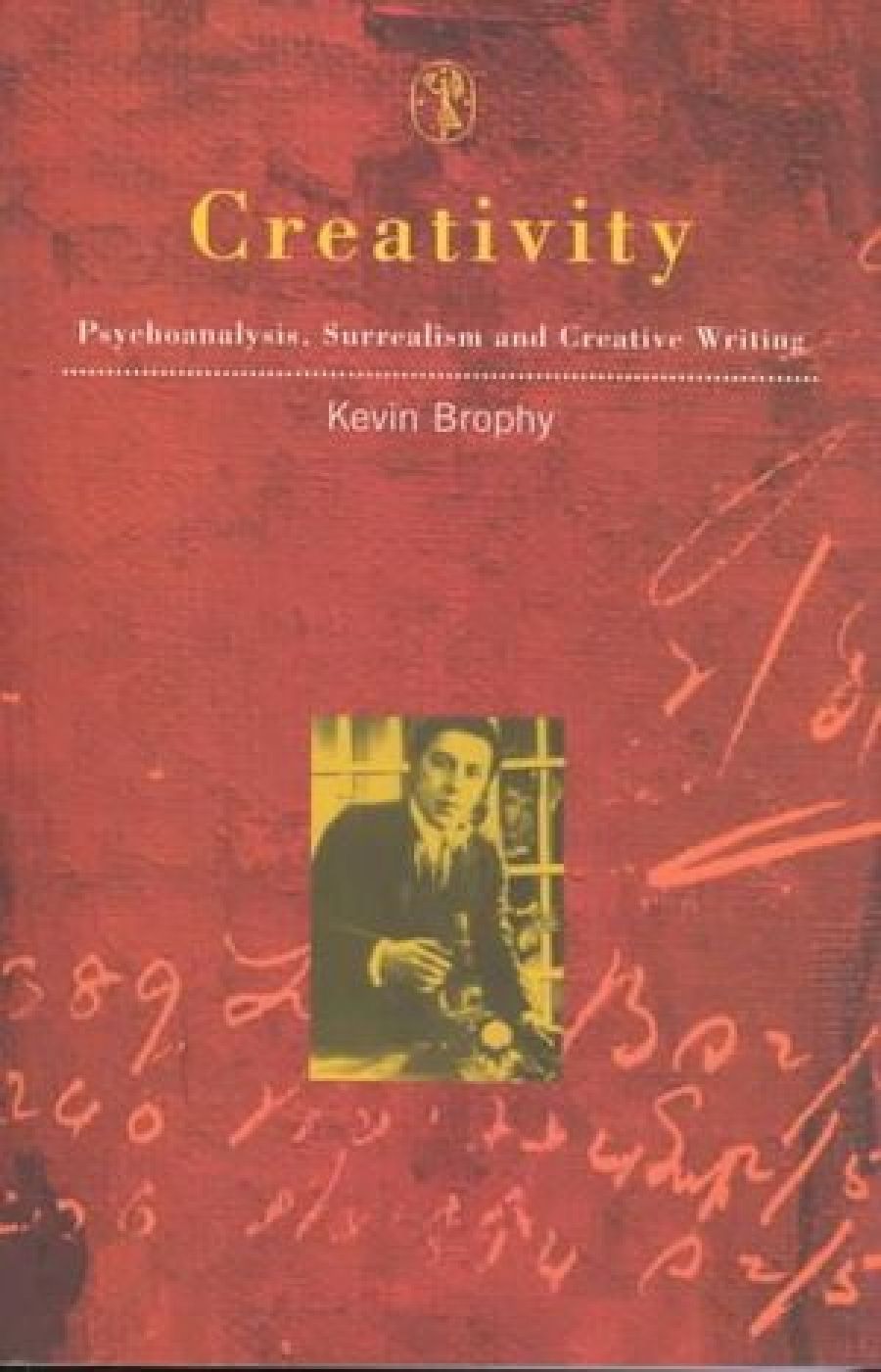
- Free Article: No
- Contents Category: Literary Studies
- Review Article: Yes
- Article Title: Wellsprings
- Online Only: No
- Custom Highlight Text:
For the eighteen months or so that I taught novel writing a few years back, I was haunted by a remark of Somerset Maugham’s: ‘There are three rules for writing a novel, unfortunately nobody knows what they are.’ In his teasing way, Maugham is suggesting that while the novel has a recognisable form, it cannot – for a multitude of reasons – be reduced to a formula. What escapes definition is what makes the journey into the unknown worth the effort for both the writer and the reader. The danger is, of course, that such a remark can be used to mystify the whole process and imply that creative writing can’t be taught. You either have what it takes or you don’t.
- Book 1 Title: Creativity
- Book 1 Subtitle: Psychoanalysis, Surrealism and creative writing
- Book 1 Biblio: MUP $29.95 pb, 263 pp
- Book 1 Readings Link: https://www.booktopia.com.au/creativity-kevin-brophy/book/9780522847864.html
The beauty of Creativity is the way it revels in the mystery of the creative process even as it demystifies· the rhetoric surrounding it. Rather than attempting a definitive account, Brophy deftly negotiates his way through our received notions about creativity from High Romantic and modernist assumptions about inspiration and genius to psychoanalytic and surrealist ideas about the role of the unconscious. While his perspective is a postmodern one, he remains constantly aware of the contradictions and dangers inherent in even the most selfaware of stances. The approach Brophy adopts is rigorous without being dogmatic or tedious; probing and open-minded without being overly vague or inconclusive.
At a time when creative writing has become a highly-contested discipline in tertiary institutions, with a stand-off emerging between practitioners and theorists, Brophy (as a writer, editor and teacher with a good knowledge of contemporary theory) is able to take both perspectives into account. By including his own fictional writing in the book, he also shows how creative writing itself can self-reflexively engage in a discussion about the nature of creativity.
In modernist terms, to be creative is to ‘acquire an aura denied to technicians’. Only a select group of people who do a select kind of writing – novels, plays and poetry – acquire this aura and their status is confirmed by their elevation into the official literary canon. One of Brophy’s aims is to explore how creative writers can free themselves from the limitations of entrenched mainstream notions of literature and authorship.
Having set this iconoclastic tone, he turns his attention to the contribution made by psychoanalysis and surrealism to our contemporary understanding of creativity, particularly the roles played by Freud, Lacan and André Breton. Brophy’s recurring theme is the way the struggle for legitimacy and rivalry shapes vanguard ideas. In order to establish itself as the pre-eminent hotline to the unconscious, psychoanalysis had to displace literature as the language of the psyche. Thus, Freud found himself usurping the role of the artist. At the same time, he had to deny the creative element of his new discipline in order to have it recognised as a ‘science’. Only psychoanalysis could provide the ‘real’ meaning behind the artistic work and the workings of the mind.
This pattern, Brophy argues, was repeated with Surrealism and exemplified in the Oedipal battle between Breton and Freud.
Surrealism is then a late twin to psychoanalysis in its commitment to an impersonal unconscious, to an inner life of extravagant beauty, savagery and banality, to a fundamental irresponsibility in the self, and not least to a need for talk and more talk – as automatic as possible. But like a twin it stands apart from its sibling, in competition with its Other, insisting on its difference and even its supremacy.
Lacan’s proposition that the unconscious is structured like a language allows Brophy to tease out the parallels between the psychoanalysis and writing. For all Lacan’s anxieties about status and authority, he was able to go beyond Freud and acknowledge the anarchic, creative forces at work in the psychoanalytic experience. This more open-ended, up-in-the-air approach to creativity would seem to accord with Brophy’s own views on the subject. While resisting simple definitions, he ventures that creativity is often experienced as
vivid moments of confusion, uncertainty, dilemma or confrontation. And it works best when the writer, it seems, does not yet know how to find a way out of the dilemma so foolishly entered into – and is willing to let the writing go where it will. This is the secret of writing; one that few writers will talk about, perhaps because it is so different every time.
In the final chapter Brophy tackles the contentious issue of creative writing in educational institutions. Creativity, he argues, has always been a concept or practice over which there is dispute. Dispute is heightened when creative writing is harnessed by powerful forces within a social institution. To be an author is not simply to be a solitary individual scribbling away in a garret. Authorship is a complex social, commercial, linguistic and literary construct. Brophy believes that it is important for creative writing students to be familiar with theory in order to understand the forces that shape their aspirations and endeavours. To close one’s mind to this intellectual dimension, he suggests, is to remain beholden to an ossified notion of creativity.
With its compelling, anecdotal narrative, fictional interludes, subtle argument and theoretically sophisticated approach, Creativity is a rare and rewarding book. If this integrated and challenging approach can be taken on board by teachers and students of creative writing, then Australian literary culture can only benefit.


Comments powered by CComment